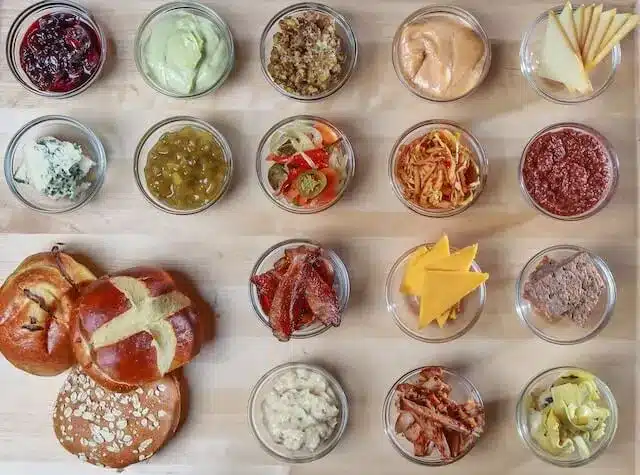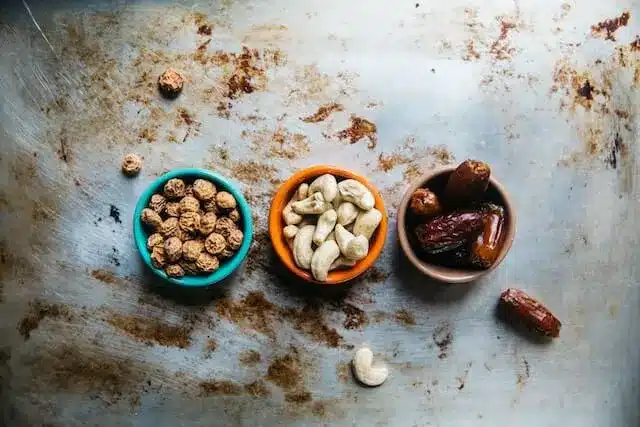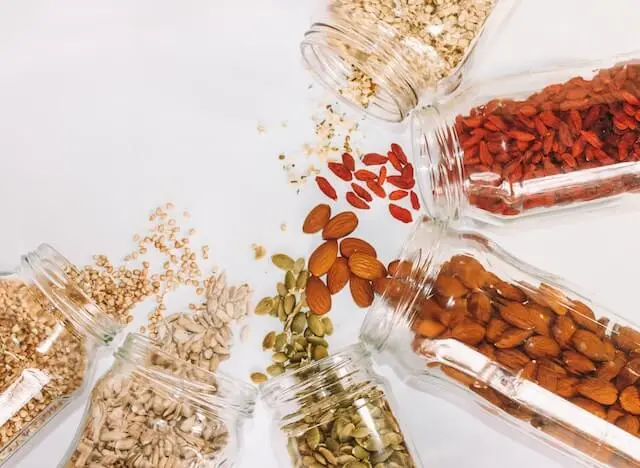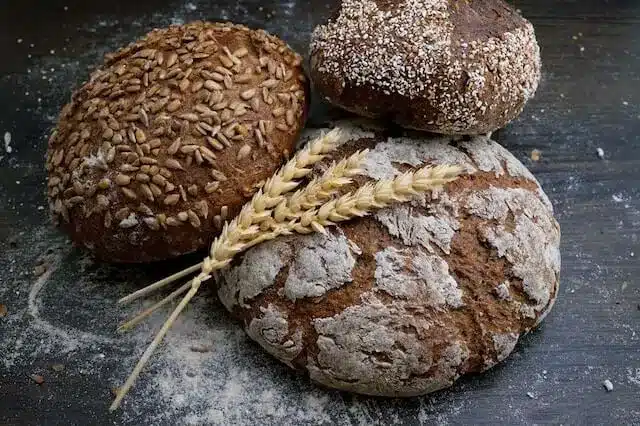Bread, a staple in many diets, has been a symbol of sustenance and simplicity for centuries. However, the art of bread making can transcend beyond the basic loaf, transforming it into a canvas for culinary creativity. This article delves into a myriad of bread additions to make your homemade loaves more interesting and flavorful. From savory spices to sweet fruits, health-conscious choices to unique global flavors, we explore a range of ingredients that can elevate your homemade bread. Whether you’re a seasoned baker or a curious novice, these ideas will inspire you to experiment and add a personal touch to your baking. To understand more about the evolution of bread making, visit this comprehensive history.
Introduction to Bread Making
The Art of Bread Making
Bread making is an ancient culinary art that has evolved over time. It’s not just about mixing flour, water, yeast, and salt; it’s a process that involves patience, precision, and a touch of creativity. The beauty of bread lies in its versatility. With the same basic ingredients, bakers around the world have created an astonishing variety of breads, each with its unique texture, flavor, and appearance. This versatility extends to the endless possibilities of ingredients you can add to your bread to make it more interesting and flavorful. For special occasions, consider exploring different types of bread as discussed in What Type of Bread is Good for Special Occasions.
Why Add Ingredients to Bread?
Adding ingredients to bread does more than just alter its flavor. Indeed, it can change the texture, nutritional profile, and even the way the bread complements other dishes. For instance, whether you’re looking to add a punch of flavor, a hint of sweetness, or a boost of nutrition, there’s an array of options to explore. Furthermore, ingredients like nuts and seeds can add crunch and nutrients, while fruits and spices can introduce new flavor dimensions. Consequently, experimenting with different additions can turn a simple loaf into a gourmet creation, making bread making an exciting and rewarding experience.
Exploring Bread Additions: Savory and Sweet Enhancements

Savory Bread Additions: Herbs, Spices, and Cheese
Incorporating herbs and spices into your bread can transform a basic loaf into a fragrant and flavorful treat. Consider classic combinations like rosemary and garlic, or be bold with turmeric and cumin for an exotic twist. Fresh herbs like basil, thyme, or dill can infuse the dough with subtle, fresh flavors, while dried herbs offer a more concentrated taste. Spices like cinnamon, nutmeg, or cardamom are perfect for a warm, aromatic touch. Remember, the key is to balance the flavors without overpowering the bread’s natural taste.
Cheese Varieties
Cheese and bread are a match made in culinary heaven. Adding cheese to your bread dough can create a rich, gooey texture and a savory depth of flavor. Experiment with a sharp cheddar for a bold taste, or a creamy mozzarella for a softer profile. Blue cheese can add a pungent kick, perfect for those who enjoy strong flavors. You can also mix different cheeses for a complex flavor profile. Grate or crumble the cheese into your dough, or create layers for a melty surprise in every slice.
Vegetables and Olives
Vegetables can add moisture, texture, and a burst of color to your bread. Consider options like sun-dried tomatoes, caramelized onions, or roasted red peppers for a sweet and savory blend. Olives, whether black or green, can add a briny depth to your loaf. Finely chopped or sliced vegetables work best as they integrate seamlessly into the dough. For a healthful twist, grated zucchini or carrot can add subtle flavors and extra nutrients. These vegetable additions are not only delicious but also a great way to sneak extra veggies into your diet. For more vegetarian cooking ideas, check out Vegetarian Cooking Guide – Essentials & Global Recipes for All.
In the next part, we will explore the sweet side of bread additions. From fruits to chocolate, these ingredients can turn your loaf into a delightful treat that blurs the line between bread and dessert. Stay tuned for Part 3, where we dive into the world of sweet enhancements for your homemade bread.
Sweet Bread Additions: Fruits, Nuts, and Chocolate

Fruits and Nuts
Introducing fruits and nuts into your bread can create a delightful contrast of textures and flavors. Dried fruits like raisins, apricots, or cranberries offer a chewy sweetness, while nuts such as walnuts, almonds, or pecans provide a crunchy contrast. These additions not only enhance the flavor but also boost the nutritional value of your bread. For a tropical twist, consider incorporating diced mango or pineapple. When using fruits, especially fresh or frozen ones, be mindful of their moisture content as it can affect the dough’s consistency.
Chocolate and Sweet Spreads
For those with a sweet tooth, adding chocolate to bread can be a real game-changer in the realm of bread additions. Chocolate chips or chunks can melt into the dough, creating gooey pockets of chocolatey goodness. Alternatively, swirls of Nutella or other sweet spreads can turn a simple loaf into a decadent treat. These ingredients are perfect for a special breakfast or a comforting snack. If you’re using sweet spreads, consider layering them in the middle of the dough before baking for a surprise filling.
Sweet enhancements in bread offer a delightful way to enjoy the comfort of homemade bread with a hint of indulgence. Whether you prefer the natural sweetness of fruits or the rich decadence of chocolate, these additions can turn a basic loaf into an irresistible treat.
Bread-Additions-Unleashing-Creativity-with-Unique-Ingredients

Unusual Grains and Seeds
Diversifying the types of grains and seeds in your bread can not only enhance its flavor and texture but also its nutritional profile. Consider incorporating grains like quinoa, millet, or barley for a nutty flavor and a hearty texture. Seeds such as flaxseed, chia, or pumpkin seeds can add a crunchy texture and are packed with nutrients. These ingredients can be mixed into the dough or sprinkled on top before baking for an extra crunch. Experimenting with different grains and seeds can introduce new flavors and make your bread more wholesome.
International Flavorful Bread Ingredients
Bread is a global staple, and incorporating flavors from around the world can turn your loaf into a culinary adventure. Consider adding ingredients like olives and feta for a Mediterranean touch, or curry spices for an Indian-inspired flavor. Japanese flavors can be introduced with additions like matcha or red bean paste. For a Middle Eastern twist, incorporate za’atar or tahini. These international ingredients not only add unique flavors but also allow you to explore different cultural culinary traditions through bread making. For more on Middle Eastern vegetarian recipes, explore Middle Eastern Vegetarian Recipes – 12 Delicious Culinary Dishes.
Health-Conscious Choices for Bread
Whole Grains and Fibers
Incorporating whole grains into your bread is a fantastic way to enhance its nutritional value.Whole grains like whole wheat, spelt, or oat flour not only add a rich, nutty flavor but also increase the fiber content, which is beneficial for digestive health. Additionally, you can experiment with ancient grains like amaranth or teff for a unique taste and texture. Moreover, these grains are packed with vitamins and minerals, making your bread a healthier option. Furthermore, adding bran or psyllium husk can further boost the fiber content without significantly altering the flavor.
Low-Calorie Options
For those mindful of calorie intake, there are several ways to make bread lighter and healthier. Substituting a portion of the flour with almond or coconut flour can reduce the carbohydrate content and add a subtle sweetness. Incorporating vegetables like zucchini or pumpkin into the dough can also lower the calorie count while adding moisture and flavor. Using natural sweeteners like applesauce or mashed banana in place of sugar can reduce the calorie content and add nutritional benefits. These adjustments allow you to enjoy bread without compromising on health goals.
Frequently Asked Questions
How to Balance Flavors Additions?
Q: How do I ensure the added ingredients don’t overpower the bread’s natural flavor? A: Balancing flavors in bread is key. Initially, start with small quantities of your chosen ingredient and gradually increase to taste. Furthermore, consider the potency of each addition; strong flavors like garlic or blue cheese may require less than milder ingredients like zucchini or nuts. Then, taste the dough before baking and adjust as needed. Lastly, remember that baking can intensify some flavors and mellow others.
Best Practices for Adding Ingredients
Q: What are the best practices for incorporating additional ingredients into bread dough? A: To evenly distribute ingredients throughout the dough, add them during the kneading stage. For ingredients that might affect the dough’s moisture, like vegetables or cheese, consider adjusting the amount of liquid in the recipe. For chunky additions, chop them into small, uniform pieces to ensure they integrate well without disrupting the dough structure. Always ensure your add-ins are at room temperature to maintain the dough’s consistency.
Storage and Shelf Life
Q: How do added ingredients affect the storage and shelf life of bread? A: Ingredients with high moisture content, like fresh fruits or vegetables, can shorten the bread’s shelf life due to potential mold growth. Store such breads in a cool, dry place and consume them within a few days. Alternatively, refrigerate them to extend their shelf life. Dry ingredients like nuts or seeds have less impact on shelf life. Always wrap bread well to maintain freshness and prevent staling.
Wrapping Up: The Joy of Bread Making
Bread making is an art that allows for endless creativity and experimentation. By exploring various ingredients, from savory herbs to sweet fruits, and considering health-conscious options, you can transform a simple loaf into a culinary masterpiece. Each addition not only enhances the flavor and texture of the bread but also allows you, consequently, to tailor it to your taste preferences and dietary needs.
The key to successful bread making is balance and experimentation. Start with small additions and adjust based on your preferences and the reactions of those who enjoy your bread. Remember, each ingredient brings its unique qualities, so consider how they complement each other and the base flavors of your bread.
Finally, embrace the process of bread making as a journey of discovery. Indeed, whether you’re a seasoned baker or just beginning, there’s always something new to learn and try. Additionally, the joy of bread making lies not just in the delicious end product but also in the creative process itself. Thus, go ahead, experiment with different ingredients, and relish the endless possibilities that homemade bread offers. In conclusion, the art of bread making is an ever-evolving craft, inviting you to explore and innovate with each loaf you bake. For more ideas on serving bread at parties, check out Mastering Bread Serving at Parties – A Comprehensive Guide.


2 thoughts on “Bread Additions: Creative Ways to Enhance Your Homemade Loaf.”